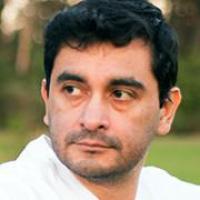Day 3: A day in Nikko Japan
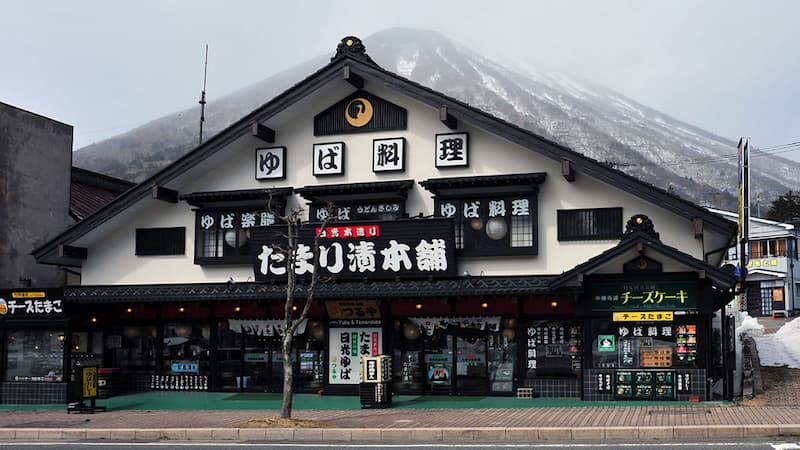
After spending a day with our tour guide Michiko, she informed us that today marked the Vernal Equinox Day, a public holiday in Japan. It basically meant that our trip to Nikko would be a crowded one since many people would be making the journey to the area. It was our first time taking a 2-hour train ride from Asakusa station to the north of Tokyo.
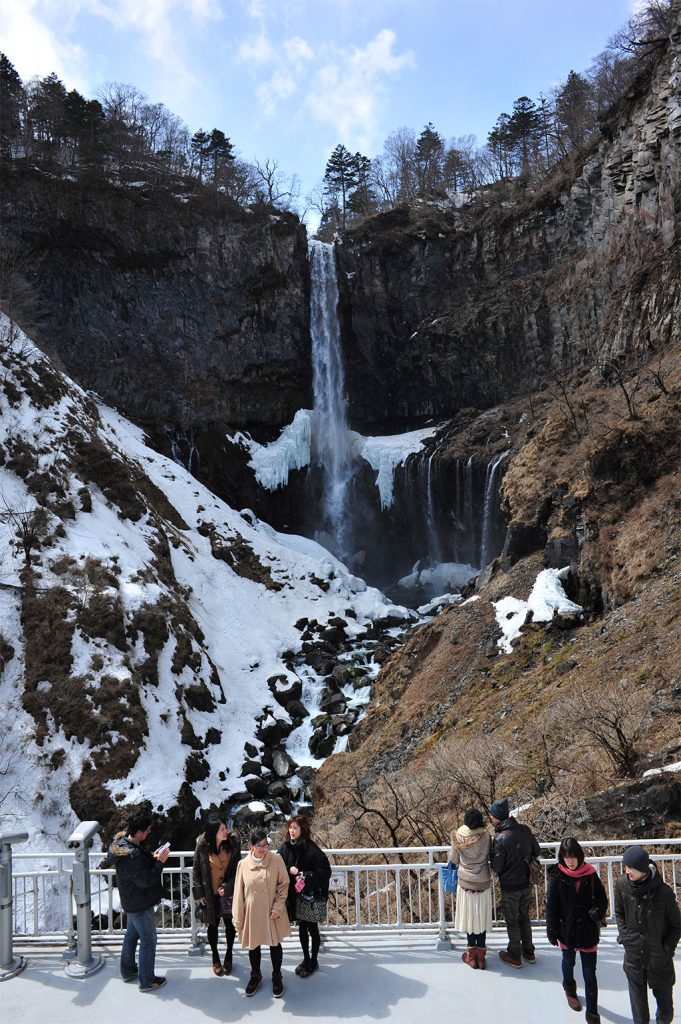
Since we didn’t know how many people were traveling to Nikko or how crowded the journey would be, we didn’t feel an urgency to rush to the train station. We got on the train fairly late and we picked the wrong seats. The trains normally have red seats for regular passengers and courtesy seats for the elderly, pregnant and disabled. We sat on the courtesy seats because we wanted to sit together. But after the first stop, the train was so crowded that we had to give up our seats to the elderly. Needless to say, we spent 2 hours traveling on our feet. Linaka was lucky enough to sit down halfway through the journey, but most people didn’t get off until the end of the line.
Nikko World Heritage Site
Nikko is a world heritage site housing many shrines, foot paths and a temple. Additionally, there are many other magnificent sites such a the Shinkyo (sacred bridge), Kegon-no-taki (waterfalls), and Chuzenji-ko (lake) up in the mountain regions. The Shinkyo is located closer to the train station, a five minute bus ride.
When we finally arrived in Nikko I wanted to spend the day locally exploring the area and visiting the shrines; however, Linaka wanted to go into the mountains to visit Kegon-no-taki (Kegon waterfalls). I was reluctant since it was another 40 minute bus ride up the mountain, but we both decided it would be the most effective use of our time. The last train to head back to Tokyo was scheduled for 5:39 p.m. which gave us about 5 hours to travel and explore the area.
Kegon-no-taki (the waterfalls) and Chuzenji-ko (the lake)

The journey up the mountain was a comfortable one. The meandering road made me feel a little dizzy so I had to close my eyes for part of the journey. Linaka loved the window seat and she got to experience what it was like to drive up the side of a mountain and see how far a fall would be if the bus driver wasn’t careful. There was snow everywhere and as we got closer to the top, it started to snow. We didn’t realise how cold it was until we got off the bus.
The bus station was close to Chuzenji Lake which had very few trees. Strong gusts of cold mountain air blew directly at us from across the lake. The icy wind did not deter us from taking pictures of the local town, the waterfalls and the lake. There was a fee to take the elevator 100 meters down to the base of Kegon Falls, but it was fun and worth it. At the base we enjoyed the view of the frozen waterfall. Other tourist were there taking selfies and admiring the frozen waterfall.
Afterwards, we returned to the surface and had a hot chocolate in one of the local coffee shops. I shared a sausage on a stick surrounded by a swirl of dough with Linaka. It was also nice to get out of the cold wind. My hands had frozen over while taking pictures of the waterfall. After spending several minutes warming up, we went back out and headed to Chuzenji Lake.
Apparently Chuzenji Lake was formed from the eruption of Mount Nantai. It’s about 24 km round and 172 meters at it’s deepest point. I had never imagined I’d see a lake on a mountain. When we first arrived I thought the lake was the ocean. The winds were strong, so they formed small waves on the surface. Walking back to the lake seemed much farther than I had remembered. Time was quickly running out and we had to catch the last bus. I ran to the lake to take some quick pictures while Linaka waited for me at the bus stop. Gusts of freezing wind blew through my body but I managed to take some snapshots. Afterwards I rush back to the bus stop and journeyed down the mountain.
Toshogu and Futarasan Shrines
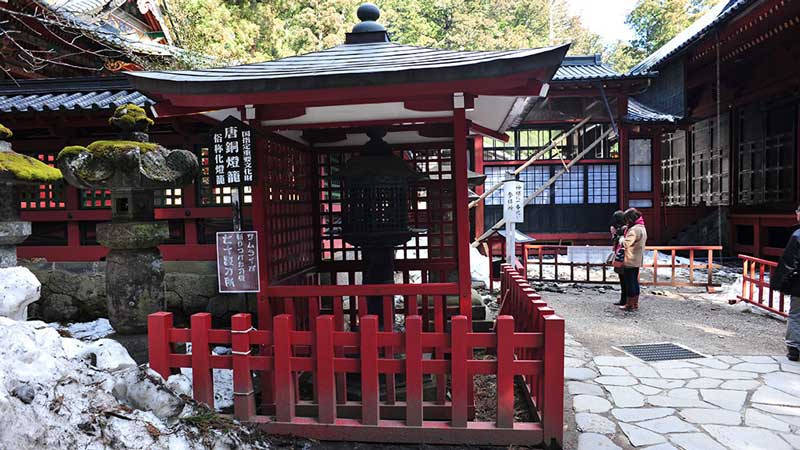
Nikko was amazing to explore. If you like mountains, streams and lots of trees, then the hidden gems (the shrines) make Nikko an awe inspiring place to visit. On our way down the mountain our first stop was Nishisando which led us to Futarasan shrine. There are two areas that require an entrance fee, but at 200 yen it’s worth exploring those ancient structures.
Futarasan felt like we were propelled into ancient Japan. At one point I felt like a pilgrim making a journey to an ancient Buddhist temples. The buildings were colourful and larger than I had imagined. Although we were there as tourist snapping pictures, there were many local people who were there to pray.
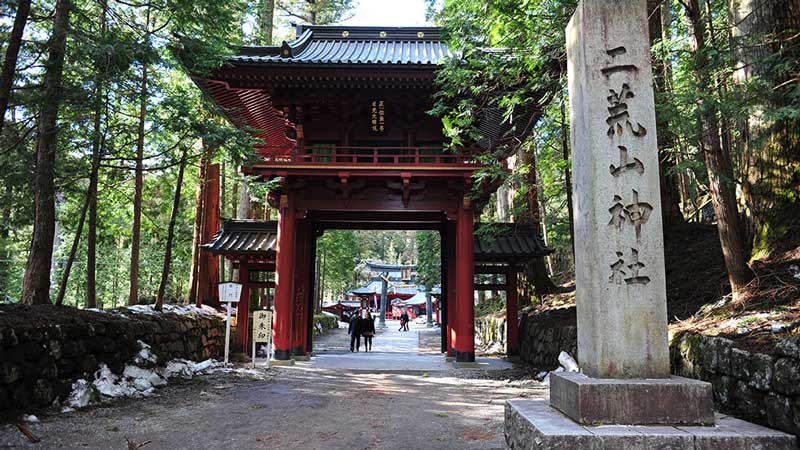
I thought Futarasan was amazing, but as we walked through some of the gateways and found ourselves at Toshogu shrine I was just blown away. I could not believe what I my eyes. The buildings were beyond belief. Large pagodas stood out from amongst the trees. The main shrine was colourful and decorated in the family crest of the Tokugawa shogunate. You could see that at some point it may have been a shrine for monks, but it was taken over by the Tokugawa and used by the shoguns.

We entered the main building and took the tour to explore inside. Removing your shoes was a requirement in order to enter the shrines. The tour showed us where the shogun resided. Many local visitors sat and prayed while the tour took place. Linaka whispered to me, “can’t you imagine samurai walking up and down these isles?” It wasn’t until she mentioned it that I realised how significant the place was. We had to rush through the hallways since the shrine closed at 4:00 p.m. and the inner shrine closed at 3:30 p.m. We managed to see as much as we could before we headed to our next destination.
Shinkyo (sacred bridge) and the local town
Exhaustion started to set in by the time we had left the shrines. I wanted to take a bus back to the station but Linaka pointed out that Shinkyo bridge was close by, so we explored the area further and walked to the bridge. Shinkyo was opened earlier in the day, but since it was now late the bridge was closed off. However, it did not stop us from taking some nice pictures from the main crossing path. The rest of the time was spent walking over 1000 meters through the town and to the train station. There were many nice places to see in town, but since we needed to catch the last train, we couldn’t stop to explore any further.
Conclusion
Our trip to Nikko was a full day excursion. If you are not physically fit, then I recommend keeping to one area. Trying to explore all of the locations in Nikko is very hard to do in a single day. We enjoyed our time in the mountains admiring the waterfalls and the lake and ended the day exploring the shrines close to the main town. Although it was freezing in the mountains and cold in the shrines, we still enjoyed it all.
Memorable moments
- We ate a sausage and had hot chocolate by the waterfalls
- Rushed to visit many places that we starved the rest of the day (we didn’t stop long enough to eat lunch)
- Apparently, Linaka doesn’t use the toilet, she says that I go to the toilet too much LOL
- Walked down a hill on a meandering path, Linaka was exhausted, but an old lady walked up the hill past us. She was tired and stopped for a moment to rest before continuing up the hill. She showed us how to really be fit. LOL
- Linaka took a picture of me in a phone booth
- We came home with more post cards
- Almost got on the wrong train and had minutes to get on the right train before it left the station
- The signs were all in Japanese, so it took some guess work to get around
- Got back to the hotel and were so exhausted we went straight to sleep
- I managed to get up to write up this post LOL
